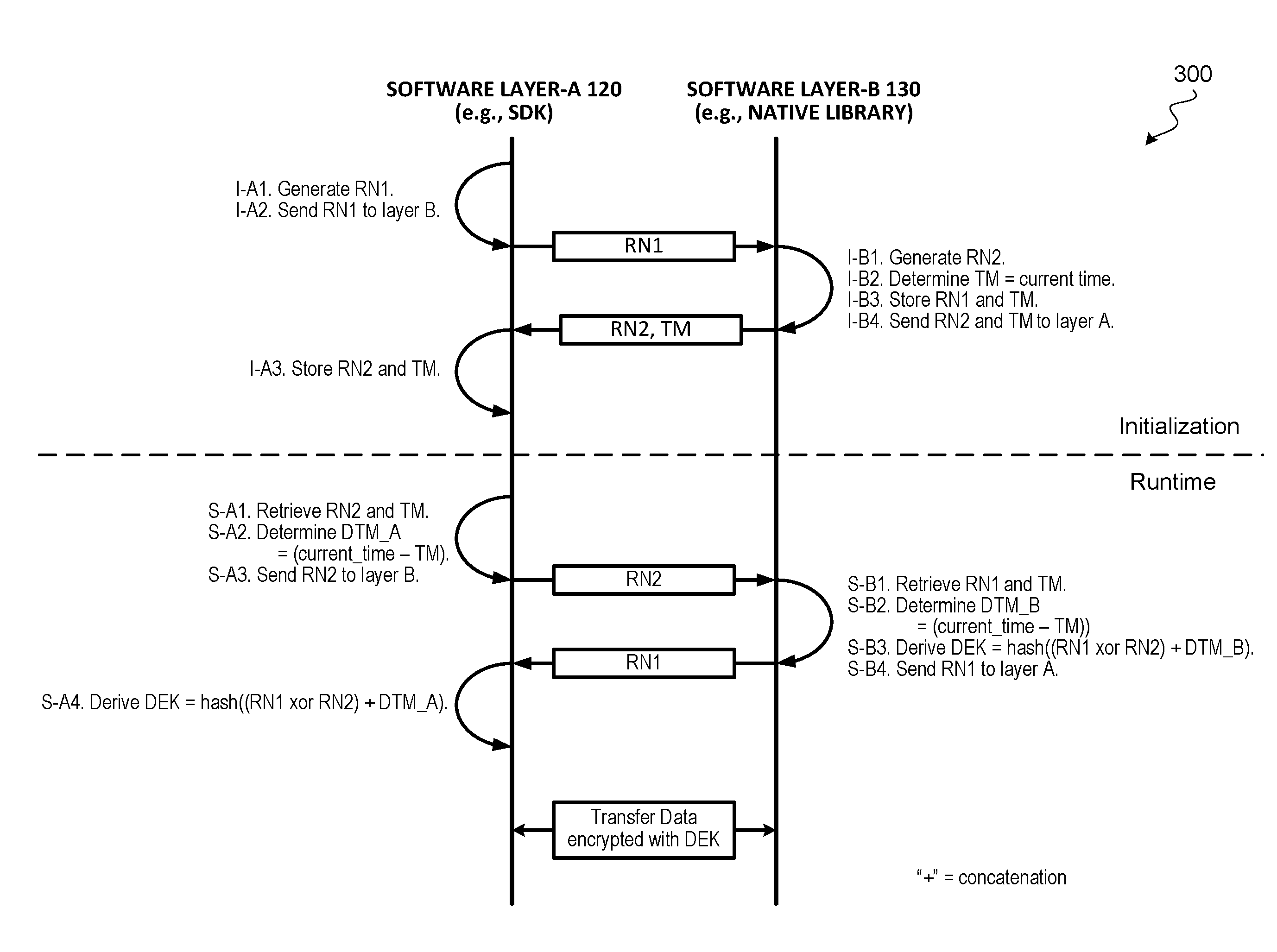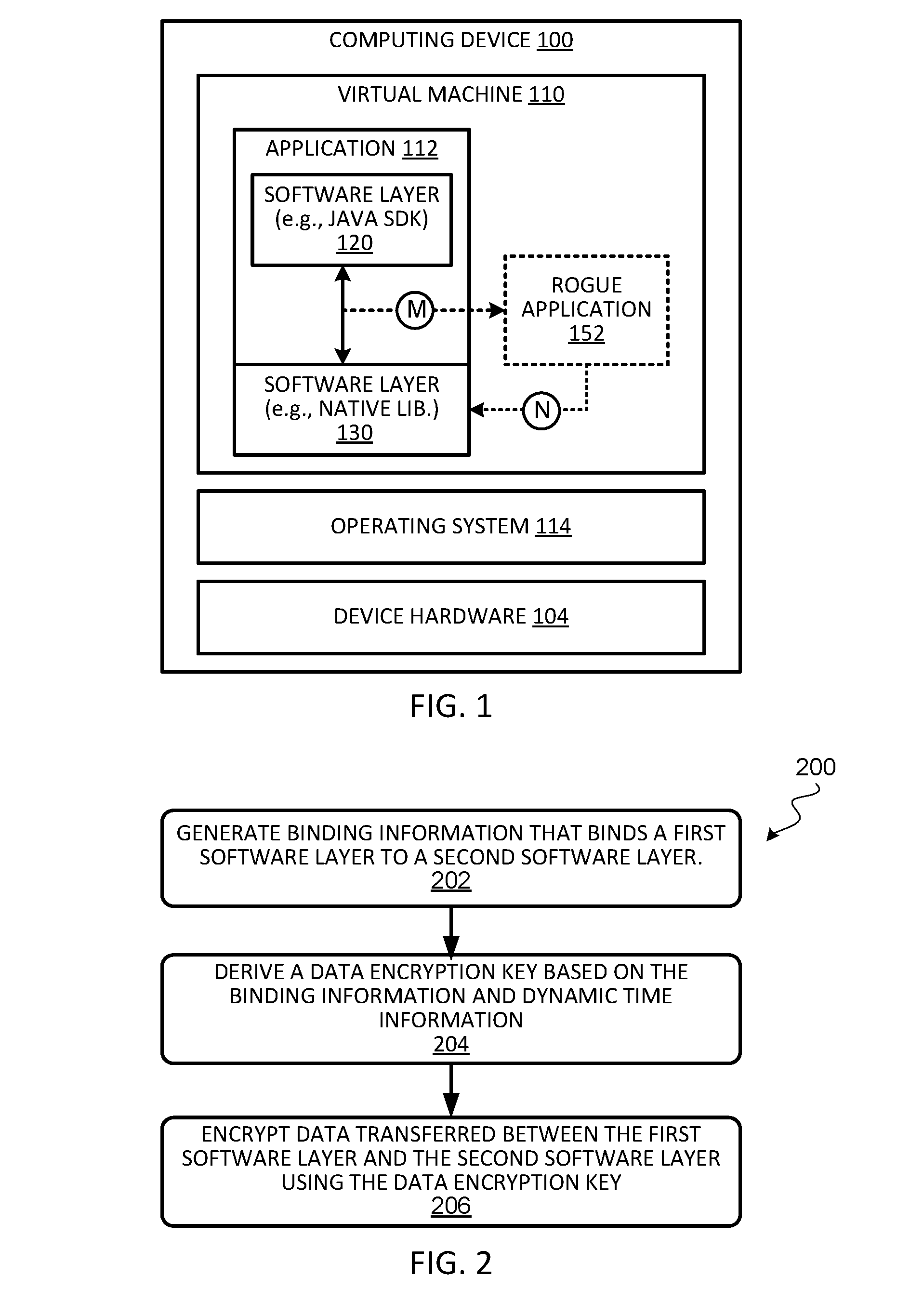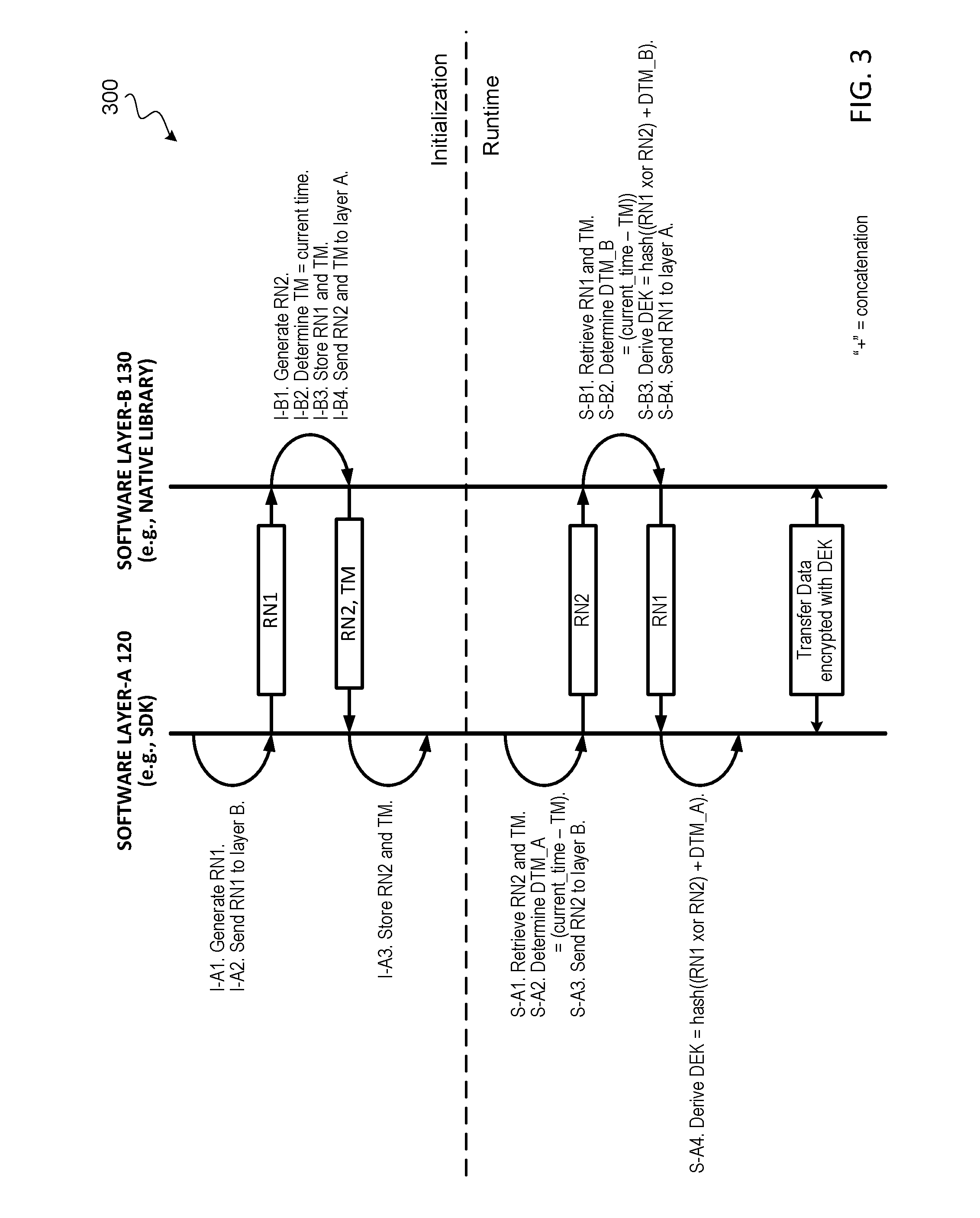Mutual authentication of software layers
- Summary
- Abstract
- Description
- Claims
- Application Information
AI Technical Summary
Benefits of technology
Problems solved by technology
Method used
Image
Examples
example implementation
III. Example Implementation of Binding Algorithm
[0072]FIG. 8 illustrates a communication flow diagram of an example implementation of a binding algorithm to bind a first software layer (e.g., software layer-A 120) to a second software layer (e.g., software layer-B 130) during the first time initialization of a software application, according to some embodiments. In some embodiments, software layer-A 120 can be a SDK (e.g., written in Java), and software layer-B can be a native library (e.g., written in C or C++), or vice versa. In some embodiments, the two software layers can be written in the same language. For ease of explanation, the steps performed in the binding algorithm during the first time initialization are denoted as “I-Xn” where X indicates the software layer, and n is the step performed by that software layer. Various encryption keys (referred to as binding keys) are derived and used in the binding algorithm. The binding keys used in the binding algorithm are denoted as...
PUM
 Login to View More
Login to View More Abstract
Description
Claims
Application Information
 Login to View More
Login to View More - R&D
- Intellectual Property
- Life Sciences
- Materials
- Tech Scout
- Unparalleled Data Quality
- Higher Quality Content
- 60% Fewer Hallucinations
Browse by: Latest US Patents, China's latest patents, Technical Efficacy Thesaurus, Application Domain, Technology Topic, Popular Technical Reports.
© 2025 PatSnap. All rights reserved.Legal|Privacy policy|Modern Slavery Act Transparency Statement|Sitemap|About US| Contact US: help@patsnap.com



